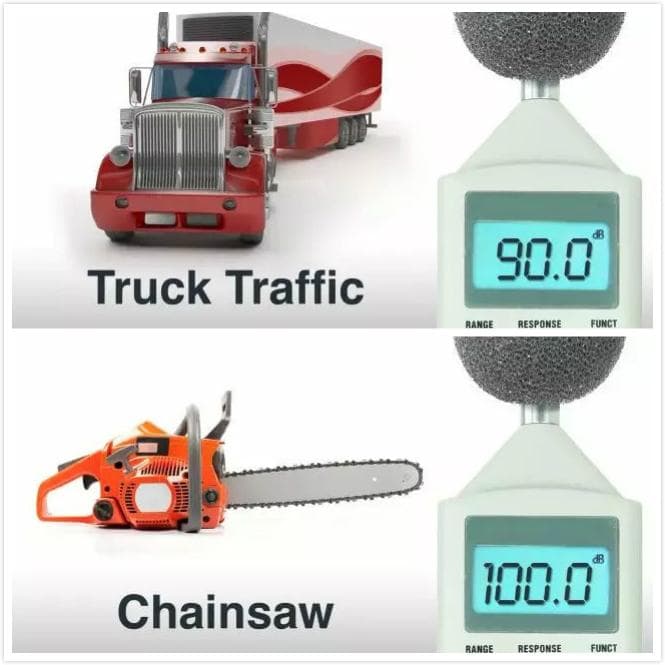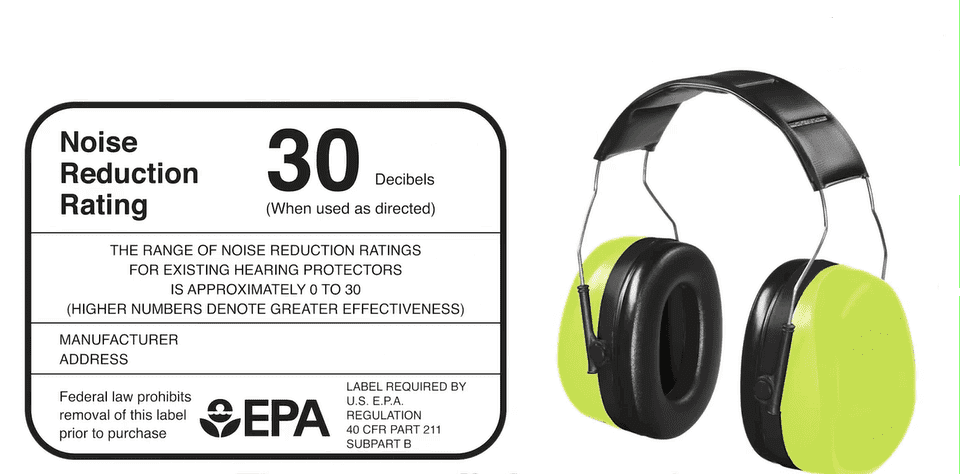Hearing protection and NRR
Prolonged, unprotected exposure to excessive noise can cause irreparable hearing damage. It is vital, therefore that everyone in your facility take appropriate steps to protect their hearing from workplace noise.
What exactly is considered excessive noise? Excessive noise has been defined by the U.S. Environmental Protection Agency as exposure to sound greater than 85 decibels continuously over an 8 hour period. How loud is 85 decibels? To give you a better idea, here are some samples of fairly common noises that the EPA would consider excessive:

Truck Traffic = 90 dB
Lawnmower = 90 dB
Chainsaw = 100 dB
Passenger Jet = 120 dB
Jackhammer = 130 dB
Alarm Siren = 140 dB
All hearing protection devices are individually rated by how well they reduce noise. This Noise Reduction Rating or NRR for short is clearly visible on the label of every hearing protector sold today. These earmuffs for example have an NRR rating of 30 meaning they will provide 30 decibels of protection, reducing the sound of a chainsaw from 100 decibels to a much safer 70 decibels.

It is also possible to combine earplugs and earmuffs for even greater noise protection. Determining the NRR rating for dual protectors is easy. Just increase the NRR rating of the higher rated protection device by between 5 and 10 points. In this example, using these disposable ear plugs with an NRR rating of 33 along with these ear muffs with an NRR rating of NRR27 would provide you somewhere between 38 and 43 decibels of noise protection.










